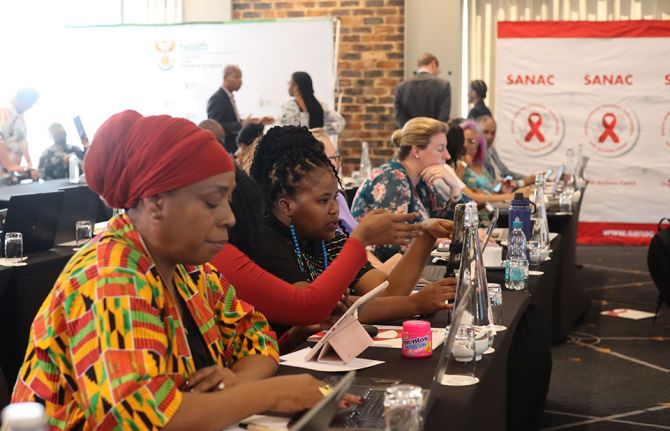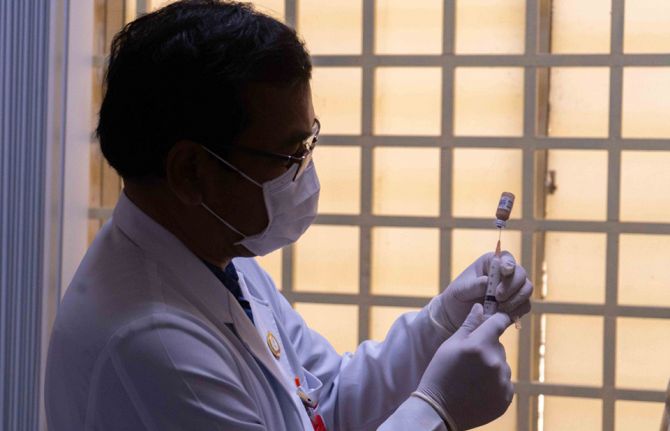
Feature Story
UNAIDS Task Team develops effective tools to help young people tackle HIV
05 June 2009
05 June 2009 05 June 2009
The seven Guidance Briefs on young people and HIV help strengthen the response to the epidemic among this key group
In 2007, around 40% of new infections were in the 15-24 age group and more than 5 million youth are living with the virus, around 60% of whom are girls.
Empowering young people to protect themselves from HIV is one of the eight priority focus areas for UNAIDS and its Cosponsors under the Joint action for results: UNAIDS outcome framework 2009-2011.
In order to give young people the urgent attention they need, a series of seven Guidance Briefs has been developed by the UNAIDS Inter-Agency Task Team (IATT) on HIV and Young People.
[A]s of 2007 only 40% of young men and 36% of young women had accurate knowledge about HIV, showing that even basic HIV awareness programmes have had inadequate reach…. It is essential that we sustain efforts being made as well as scale up the response.
Purnima Mane, UNFPA Deputy Executive Director and Michel Sidibé, UNAIDS Executive Director
The Task Team, convened by UNFPA, intends the Briefs to be used to guide staff, governments, donors and civil society on how to develop and implement an effective response to HIV among young people. Their needs, although reflecting those of the general population to a degree, are also very specific. In the foreword to the series Purnima Mane, UNFPA Deputy Executive Director and Michel Sidibé, UNAIDS Executive Director remark that there is still a long way to go in ensuring young people have access to knowledge.
They contend that despite a global commitment to ensure that 95% of youth have HIV-related information, education, services and life skills by 2010, “[A]s of 2007 only 40% of young men and 36% of young women had accurate knowledge about HIV, showing that even basic HIV awareness programmes have had inadequate reach…. It is essential that we sustain efforts being made as well as scale up the response.”
The needs of young people can often be overlooked during policy development as youth tend to lack a voice when it comes to decision-making around interventions designed for them. The briefs argue, based on global evidence, that their engagement in the development of HIV prevention programmes is not only desirable but “critical to programme success”.

Courtesy of UNFPA
The fourth Guidance Brief in the series, for example, which concentrates on community-based interventions, shows exactly how young people can become engaged in HIV prevention and really make a difference. In Ecuador transgendered youth in the Frontiers Prevention Project developed their own programme to mobilize their peers, who belong to a most-at-risk group, to address the epidemic. The Brief reports that they later formed the country’s first transgender non-governmental organization, demanding health services, challenging discrimination and promoting their human rights. Young people in Zambia are also shown to be getting involved, as they deliver care and support to people living with HIV in their communities.
The series includes an overview which highlights four key areas of action that focus on alleviating the effects of the epidemic on young people:
- Information to acquire knowledge
- Opportunities to develop life skills
- Age-appropriate health services
- The creation of a safe and supportive environment.
These must all be provided simultaneously, through behaviour change communication strategies, if interventions are to be successful.
The remaining Briefs examine most-at-risk young people and youth in a variety of settings; humanitarian emergencies, community based initiatives, in the health sector, the education sector and in the workplace. Again, the centrality and importance of young people in defining their own role in tackling HIV is demonstrated. The final Brief, concentrating on the workplace, reports that the ILO and its partners in Rwanda organized a youth consultation aimed at finding out their concerns and needs and working out a joint response. The young people said that opportunities for decent work and HIV prevention were “two sides of the same coin”. From this November 2007 meeting, the ‘Kigali call to action’ emerged, which includes measures to promote youth employment and challenge HIV.
The series is not designed to provide a one size fits all “blueprint” for every country to follow. The Task Team hopes that the Guidance Briefs, by presenting a raft of evidence-informed interventions, will encourage partners to explore what works for them in trying to ensure an HIV-free future generation - with young people helping to chart the way forward.
The UNAIDS Inter-Agency Task Team (IATT) on HIV and Young People was created in 2001 and is made of the UNAIDS Secretariat, the 10 UNAIDS Cosponsors, youth and civil society groups, research institutions and donors.
UNAIDS Task Team develops effective tools to help
The UNAIDS Inter-Agency Task Team (IATT) on HIV and Young People: Guidance Briefs:
Introduction and foreword
Overview of HIV Interventions for Young People
HIV Interventions for Most-at-risk Young People
HIV Interventions for Young People in Humanitarian Emergencies
Community-based HIV interventions for Young People
HIV Interventions for Young People in the Education Sector
HIV Interventions for Young People in the Health Sector
HIV Interventions for Young People in the Workplace
Key populations:
Cosponsors:
Feature stories:
HIV response and the education sector: UNESCO Best practice series (04 May 2009)
Prevention programming for young people (18 June 2007)
Publications:
Joint action for results: UNAIDS outcome framework 2009-2011 (pdf, 432 Kb.)
Preventing HIV/AIDS in young people: Evidence from developing countries on what works (2006) (pdf, 562.5 Kb.)
Young people and HIV: Hope for tomorrow (2004) (pdf, 1.09 Mb.)



